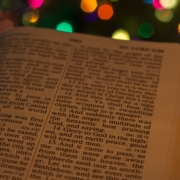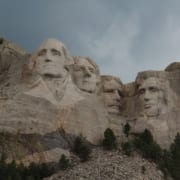The Song “Your Grace Is Enough”: A Universal Statement of Grace That Connects All Denominations
My grace is sufficient for you, for my power is made perfect in weakness.
2 Corinthians 12:9
After leaving a Catholic church, my wife said to me, “we are all Christians first and denominations second.” We travel a lot and, on many Sundays, find ourselves going to churches that are different than our Methodist church. The more we attend churches of other denominations—and even non-denominational churches—the more this simple quote rings true. We are all connected, as Christians, by the grace of God through Jesus Christ.
There are different worship practices from denomination to denomination. The Catholic service always ends with communion, while Protestants generally hold communion once a month. Some churches baptize with a sprinkle, while others engage in full body immersion. But what we notice when visit other denominations is the sacredness that the clergy and congregation have during Sunday service. It is a piety that is universal. We don’t always agree with what we hear in the sermon but, for the most part, the churches we visit have a sacred sincerity in worship.
When I was studying the song, “Your Grace is Enough,” I noticed its complex connection to multiple denominations. The song was written by Matt Maher, who identifies himself as a charismatic Catholic. A lifelong Catholic, Maher became inspired by contemporary music written by other composers. As a graduate of Arizona State University with a music degree, he became a music leader in various Catholic parishes and began to blend these songs into Sunday worship.
Your Grace is Enough
In 2003, the burn out from parish life began a time of spiritual hardship for Maher. After reading 2 Corinthians 12:9, he wrote the song “Your grace is Enough.” He was inspired by the Apostle Paul’s story of asking Jesus to relieve him of the thorn in his side, to which Jesus replied, “My grace is sufficient for you, for my power is made perfect in weakness.” This was a revitalizing moment for Maher, when he understood that a life of following Jesus would not always be easy. With a renewed sense of dedication, he wrote the song, “Your Grace is Enough.”
Later that year, due to his rising popularity, he was invited to play his new song at a Pentecostal Evangelical youth event. Chris Tomlin and his band provided musical support. Tomlin was moved by the words and had asked Maher if he could record the song, to which Maher agreed. In 2004, the song was included on Tomlin’s album Arriving. Today, many credit —a Pentecostal contemporary singer—with the song, which was, in fact, written by a lifelong Catholic. It has now become a staple at many non-denominational churches and is also included in the contemporary worship song books of many mainline denominations.
Another twist in the story of denominational connection with the song comes from the United Methodist church. The Discipleship Ministries of the United Methodist Church, recently declared “Your Grace is Enough” as one of the top Wesleyan songs, stating it’s lyrics were strongly Wesleyan in a theological sense. In other words, they were strongly connected to the founder of Methodism, John Wesley. It is remarkable that a song written by a lifelong Catholic songwriter would have such a strong Wesleyan support.
Enjoying the Debate
While I was in theological school at Drew University (a Methodist-affiliated school), the professor who taught Methodist history and doctrine would lambast contemporary songs weekly, calling them thin and weakly thought out. Dr. Williams was deeply devoted to the traditional Methodist songs and saw these contemporary songs as a threat to his tradition. Privately, I got to know Dr. Williams well and would spend many moments challenging him on his views. As was the case with most of my professors, he enjoyed the debate.
My Argument
My main argument was that even if the song didn’t have long discourses on faith, if they inspired the contemporary listener, it was enough. Dr. Williams would look at a song like “Your Grace is Enough” and conclude there weren’t enough words. True, the traditional hymns of the Methodist are very wordy and, when studied closely, provide an in-depth theological explanation. But the melodies are slow and tedious, reducing the enthusiasm of the listener.
So, when we turn to the words and know the history behind this song, there is a rich and theological meaning. From a simple verse in the Bible, come the main words, your grace is enough. For the original author that meant he needed to rise above the pains of being a parish music leader and focus on Jesus. To let go of those things that bind us and focus on the majesty of God’s grace. It is a redirection of how we look at life.
Click on the following link, and you will hear Chris Tomlin’s wonderful rendition of “Your Grace is Enough” along with its lyrics
This is a song that crosses many denominations and simply states an important theological message: Your Grace is Enough.
Blessings, until next time,
Bruce L. Hartman
Dr. Bruce L. Hartman is the author of Jesus & Co. and Your Faith Has Made You Well.
Photo by Kirill Pershin on Unsplash
We love to give credit to budding photographers










